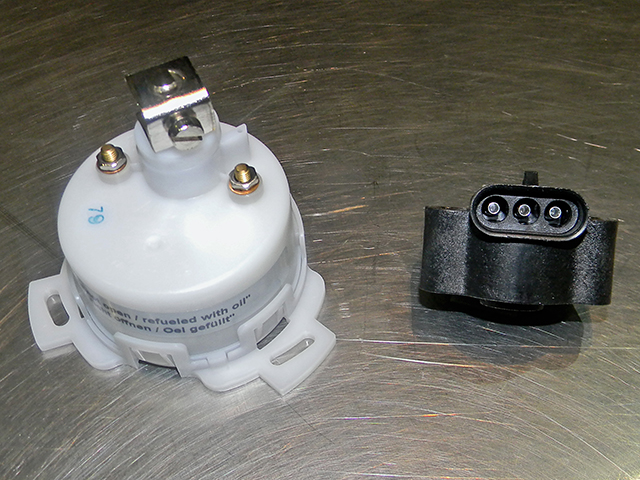Ask the Mechanic
Story of the Rheostat and the Potentiometer
READER: Can you tell me the difference between a rheostat and a potentiometer? I've heard them called the same thing, but I think they have different functions.
STEVE: The rheostat is more concerned with current, and the potentiometer (pot) is more concerned with voltage, although they both can change voltage. Pots are used for controlling the signal level of a circuit and not the power of the circuit. You can always tell the difference by looking at the number of wires on the device or the number of terminals. The rheostat will have two wires, and the "pot" will have three wires. The variable rheostat simply decreases or increases the flow of electrons (current) in order to change voltage, but a pot divides the voltage, which is why it needs the third wire. An electronic control unit (ECU) can make adjustments to a function by reading the changing voltage feed. Incoming voltage is divided between the ground and the ECU as the potentiometer changes positions. This change in voltage is monitored by the ECU. Next, the ECU sends the necessary signal to a driven servo to make the requested change sent by the pot. Finally, the function is performed as requested by the voltage change sent from the pot on the machine or the operator. It works just like your farm. The battery owns the farm, the pot is the farm manager, the ECU is the foreman, and the servo does the work in the field.
P[L1] D[0x0] M[300x250] OOP[F] ADUNIT[] T[]
READER: I know that diesel engines seem to run a long time, but is it important to have the valve lash checked? If so, when do you recommend this should be done? Do the valves need to be checked because of wear from the rocker arm and the end of valve or valve cap?
STEVE: Yes, diesel engines of today have a long life, not only because of new engine technology but also the fact that today's engine oil is so much better -- and specifically designed for a particular engine application. I personally like to "run the valves" on my newer trucks with the Cummins every 150,000 miles. However, I run the valves on the old "dirty 12 valve" every 100,000 miles. The majority of the wear comes from the "seating" of the valves in the head, which increases valve lash, because they are constantly slamming against the head. Valve lash changes engine timing, and correct engine timing is related to engine longevity. Engines like clean oil that is changed regularly.
READER: I have a late-model John Deere 4020 that has a fuel problem. It will start fine, run awhile then quit. It will start back up, but then it dies again. I have changed the fuel filter, lift pump and all the fuel lines from the tank. If I let it rest for a while, it will start and run longer, but still dies. The quicker I start it back up after it dies, the less time it will run. I guess the only thing left is the injector pump. Do you think I have air in the lines?
STEVE: More than likely the problem is with the return line being completely plugged. The return line is where fuel from each injector is "leaked off" by the injector. This return fuel is by design. It cools and lubricates the injector during operation, then it is returned to the tank. The blockage is usually in the fitting on the top of the fuel tank where the return line connects to the fuel tank. Make sure the passage is completely open all the way down inside the tank.
SAFETY TIP OF THE MONTH:
When servicing a tractor with mechanical front-wheel drive (MFWD), special attention must be taken when running the tractor in gear and the rear wheels under power with rear wheels supported (off the ground). It is important to always support both the front and rear wheels when running the wheels during a test even though the MFWD is disengaged. Loss of electrical power or transmission or hydraulic system pressure can engage the front wheels. If this happens, the unsupported front wheels will pull the tractor off its rear supports. The hydraulically engaged MFWD tractors can require voltage to disengage the MFWD and no voltage to engage the MFWD. Never trust a switch or wire with your life. Electricity is great, but it is hard to control and is always trying to go to the wrong place or leave the right place.
> Write Steve Thompson at Ask The Mechanic, 2204 Lakeshore Dr., Suite 415, Birmingham, AL 35209, or email mechanic@progressivefarmer.com.
[PF_0520]
(c) Copyright 2020 DTN, LLC. All rights reserved.




